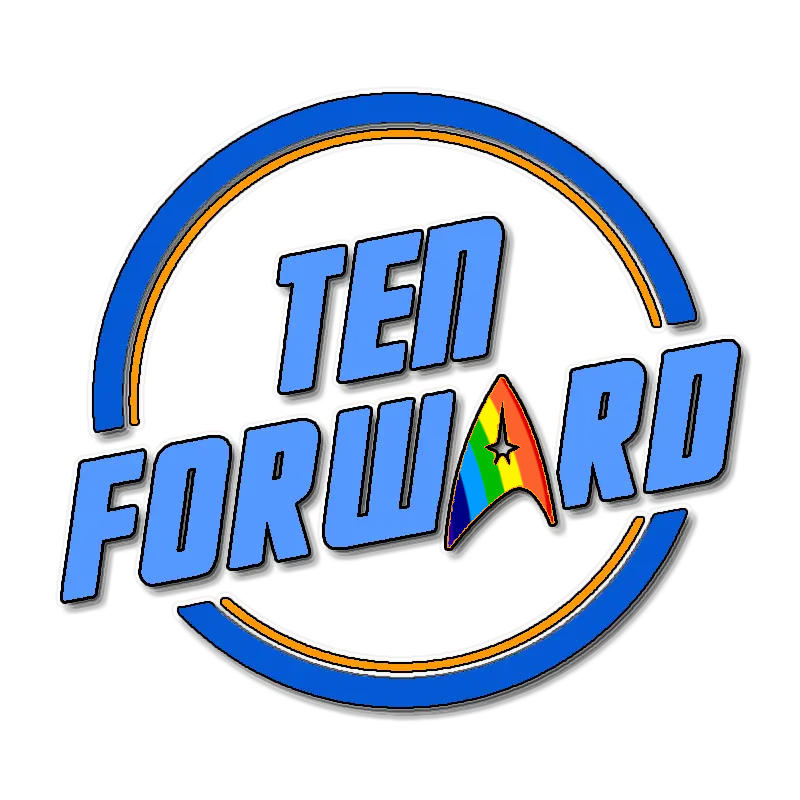

To be fair to macOS, it’s still Unix-based, which at least makes it less miserable for development than Windows.
I would still go for Linux any time, though.
“Life forms. You precious little lifeforms. You tiny little lifeforms. Where are you?”
- Lt. Cmdr Data, Star Trek: Generations


To be fair to macOS, it’s still Unix-based, which at least makes it less miserable for development than Windows.
I would still go for Linux any time, though.


Well, except his parents, courtesy of Emperor Kodos.
Also, why do I kind of feel like we need to see Ensign Kevin Riley in SNW at least once? (For reference, Riley is a Lieutenant in TOS, which suggests he’s been in Starfleet a few years.)


You’re right in some ways; Windows is closer to a microkernel than Linux, though it doesn’t perfectly adhere to the philosophy of - there’s supposedly weird things like drawing calls in the Windows kernel that should be in microservice, I’ve heard
However, I wouldn’t necessarily call microkernels a detriment; in fact, Linux is a bit of an odd duck for going monolithic - modern Apple operating systems also run on a microkernel. Monolithic is an older architecture, and there are worries about the separation between components and system resilience e.g the webcam driver can’t crash the whole kernel.
In practice, it’s less of an issue, and there really aren’t any open source microkernel operating systems that are practical for production desktop and server use, which has a microkernel though there are certainly solutions for embedded systems.
QubesOS is built on Xen hypervisor, which uses a microkernel design, but Linux is then run in multiple VMs on top of it, which makes it more of a technicality in my eyes. RedoxOS also runs on a microkernel and is certainly intended as a desktop operating system, but its hardware support is limited; GNU Hurd is even more limited in that respect and not really usable.


Huh. Maybe I can look into it and see if it’s possible for Trek.


Neat. I love Debian, but its documentation is crap! I hope this works out and I can see an improvement.
Maybe it’s because I only use stable on my laptop with Flatpaks, but honestly, Bookworm never got that crusty to me until recently - it feels like new software versions didn’t introduce a lot of must have features in the past two years. Only hiccup was I had to install the backports kernel to get Wi-Fi working.


I used to use this, but I always found it really janky - window boundaries not updating, weird graphical glitches, etcetera.
It was especially annoying to use with Photoshop and GPU acceleration (I do GPU passthrough to my VM).
In the end, I just abandoned it and just used the monitor the VM’s GPU is plugged into.


As a completely new user who’s self-described as “not very tech savvy”, Arch is probably a terrible idea, and you should switch distros.
I really like Debian, but something like Linux Mint or Fedora might be wiser for you; all three hold your hand more, which would be very important in your case. Fedora and Debian specifically are designed to work well with KDE, although Fedora will have newer versions.
You certainly seem willing to learn (you got through the Arch install process), and I think you still have a great opportunity to enjoy Linux, but considering you’re calling the terminal emulator “Konsole”, your self-description is probably apt. FYI Konsole is just one application to access the terminal, kind of like how Firefox and Chrome are both web browsers, but you don’t use “Chrome” to refer to web browsers.


Janeway responds to “nuqneH” with a very aggressive, spit-filled “nuqneH”, which most Klingons would laugh at were it any other human.


I mean, that’s at least a grounded Anglicization that I could see someone in-universe coming up with. Pronunciation-wise, ”Fek’lhr” isn’t so bad either, but still incredibly stupid spelling-wise. 


Who the heck came up with “Fek’lhr”?! Like, it’s clearly it intended to be a Klingon word and not an Anglicization, but they failed miserably to actually follow the rules of the language.
It’s so bad it looks like Okrand had to fix it in one of his Klingon audio tapes - the official Klingon word is “veqlargh”, leaving the TNG onscreen versiob as a very weird Anglicization with a pointless apostrophe.


Funny, though honestly, I’ve always just used the instance website. I haven’t seriously tried Voyager yet, and perhaps I should.


No.
I usually just use Bash; there’s a certain level of complexity where it begins to be more reasonable to just use Python.


Yes and no. I think connotation is important here; “stable” means different things in different contexts even within computing, and they both denote different but important things - kind of like free of cost verses freedom.
In the distro case, people need/want a distribution where they know a new version won’t come and break their config when they update at 2 AM and miss it in the changelog, and “stable” has been agreed upon as the term in that context. Of course, that can change, as all language does, but that’s just the current convention.
Also, Debian tends to make sure software is not unusable before stable is shipped (the Nvidia thing is an anomaly I’ll explain below); while they sometimes fail, as you’ve hinted, I find it quite rare that it actually happens. Also, the “static” of Debian isn’t absolute; if something really has a breaking bug or a security vulnerability that affects overall system usability (basically something that can’t be fixed by installing a Flatpak), they will put out a fix, like with the Linux kernel or a web browser (via the security repo, included by default in all installs).
Additionally, looking at this changelog, while the Nvidia situation is objectively a bit embarrassing, it looks like they were working on getting them updated, but just didn’t have much luck - I’m guessing a breaking change in the software that made it harder to package. Also, it’s in the non-free repo, which is on the back burner compared to the rest of the distro - something in the main repo will usually only be at most a few months behind at time of distro release.


I mean, I think static is stable.
I feel like stability in some contexts means more than just the software not crashing often (although that is the big part); it means being able to expect the behavior to stay the same until you’re ready to upgrade to the next release and confront the new behavior all at once, sort of like upgrading Windows XP to Windows 7.
There’s certainly a place for rolling release - I use Debian Testing on my desktop - but I certainly appreciate being able to go a month without opening my laptop without getting a daunting notification like “There are 1578 updates available “ (on my Debian 12 Thinkpad, it’s usually only double digit, very minor updates).


Unrelated thing - just found out something funny.
Apparently, Torvalds himself uses a 580.


Someone else brought up Virt Manager here, which is my preferred; if you’ve ever used VirtualBox, you’ll probably be fine on Virt Manager. I like Virt Manager for using GTK3, as I’m in XFCE. I wouldn’t be surprised if both applications have similar settings, as they’re both LibVirt front ends, it seems.
Also, DistroBox, while a different sort of thing, is great for the sort of thing OP mentioned in that last paragraph. I usually just use command line, but there seems to be an unofficial GUI out there.


I always just booted the old kernel when I ran into the issue, but it was less than ideal, which is why I would prefer to run a stable distro in this case.
Also, isn’t ElementaryOS a stable distro anyway due to being Ubuntu-based?


I’ve never run an installfest, but I’ve been to my university’s Linux Users Group installfests, and here’s what they did:
Also, I’d recommend you bring extra USB peripherals in case the internal devices need a little bit of work; bring some extra mice, keyboards, and ethernet adapters. You hopefully won’t need any of them, but they’ll certainly make life easier if you do.
As for time, I’d imagine doing the basic install and ironing out some (not all) of the kinks probably takes less than it takes for a group to stat D & D characters, if that’s a helpful comparison for you.
Oh, yeh! In the CD pregap that’s really hard to rip and didn’t make streaming!
It was supposed to be on a compilation, but it got scrapped after he left Prophet Records for Pah Wraith Entertainment, unfortunately.